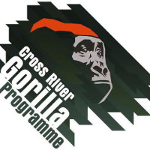[et_pb_section fb_built=”1″ fullwidth=”on” _builder_version=”3.26.5″][et_pb_fullwidth_header title=”WHAT WE DO” text_orientation=”center” _builder_version=”3.26.5″ title_font=”Montserrat|700|||||||” title_text_align=”center” title_font_size=”36px” background_image=”http://crossrivergorilla.org/wp-content/uploads/2018/02/rainforest-cameroon.jpg”][/et_pb_fullwidth_header][/et_pb_section][et_pb_section fb_built=”1″ _builder_version=”3.22″][et_pb_row column_structure=”3_4,1_4″ _builder_version=”3.25″ background_size=”initial” background_position=”top_left” background_repeat=”repeat”][et_pb_column type=”3_4″ _builder_version=”3.25″ custom_padding=”|||” custom_padding__hover=”|||”][et_pb_text _builder_version=”4.0.6″ text_font_size=”18px” header_3_font=”Montserrat|700|||||||” background_size=”initial” background_position=”top_left” background_repeat=”repeat”]
WHAT WE DO
The main goal of our Great Apes Conservation Programme is to provide long term security to the populations of the Cross River gorillas and Nigeria-Cameroon chimpanzees and their habitats through research and the implementation of a community based management strategy.
[/et_pb_text][et_pb_image src=”http://crossrivergorilla.org/wp-content/uploads/2018/02/cross-river-gorilla-distribution-map-small.png” _builder_version=”4.0.6″ hover_enabled=”0″][/et_pb_image][/et_pb_column][et_pb_column type=”1_4″ _builder_version=”3.25″ custom_padding=”|||” custom_padding__hover=”|||”][et_pb_text _builder_version=”4.0.6″ header_4_font=”Montserrat|700|||||||” custom_padding=”10px|10px||10px|false|false” box_shadow_style=”preset3″]
Conservation
[/et_pb_text][et_pb_social_media_follow icon_color=”#ffffff” use_icon_font_size=”on” icon_font_size=”20px” _builder_version=”3.26.5″ background_color=”rgba(0,0,0,0)” text_orientation=”center” box_shadow_style=”preset1″][et_pb_social_media_follow_network social_network=”facebook” url=”https://facebook.com/crossrivergorillas” _builder_version=”3.26.5″ background_color=”#3b5998″ follow_button=”off” url_new_window=”on”]facebook[/et_pb_social_media_follow_network][et_pb_social_media_follow_network social_network=”twitter” url=”https://twitter.com/crossrvrgorilla” _builder_version=”3.26.5″ background_color=”#00aced” follow_button=”off” url_new_window=”on”]twitter[/et_pb_social_media_follow_network][et_pb_social_media_follow_network social_network=”youtube” url=”https://www.youtube.com/user/AfricanConservationFoundation” _builder_version=”3.26.5″ background_color=”#a82400″ follow_button=”off” url_new_window=”on”]youtube[/et_pb_social_media_follow_network][et_pb_social_media_follow_network social_network=”linkedin” url=”https://www.linkedin.com/groups/3698347″ _builder_version=”3.26.5″ background_color=”#007bb6″ follow_button=”off” url_new_window=”on”]linkedin[/et_pb_social_media_follow_network][/et_pb_social_media_follow][/et_pb_column][/et_pb_row][et_pb_row column_structure=”1_2,1_2″ _builder_version=”4.0.6″][et_pb_column type=”1_2″ _builder_version=”4.0.6″][et_pb_blurb title=”Capacity Development” image=”http://crossrivergorilla.org/wp-content/uploads/2019/08/manos.png” _builder_version=”4.0.6″ header_level=”h1″]
Strengthening the capacity of the existing and new protected areas, as well as local communities, to conserve the Cross River gorillas and Nigeria-Cameroon chimpanzees subpopulations.
[/et_pb_blurb][/et_pb_column][et_pb_column type=”1_2″ _builder_version=”4.0.6″][et_pb_blurb title=”Biomonitoring” image=”http://crossrivergorilla.org/wp-content/uploads/2019/08/binoculares.png” _builder_version=”4.0.6″ header_level=”h1″]
Conduct scientific research and an intensive monitoring programme of the great apes subpopulations in South West Cameroon with the help of local scouts.
[/et_pb_blurb][/et_pb_column][/et_pb_row][et_pb_row column_structure=”1_2,1_2″ _builder_version=”4.0.6″][et_pb_column type=”1_2″ _builder_version=”4.0.6″][et_pb_blurb title=”Community Development” image=”http://crossrivergorilla.org/wp-content/uploads/2019/08/hoja.png” _builder_version=”4.0.6″ header_level=”h1″]
Together with local communities and international partners, develop sustainable livelihoods and economic development initiatives based on intact ecosystems.
[/et_pb_blurb][/et_pb_column][et_pb_column type=”1_2″ _builder_version=”4.0.6″][et_pb_blurb title=”Conservation Education” image=”http://crossrivergorilla.org/wp-content/uploads/2019/08/mundo.png” _builder_version=”4.0.6″ header_level=”h1″ hover_enabled=”0″]
Conduct a local conservation education programmes in communities and schools as well as an international campaign to increase on the dire situation and importance of conservation of these species.
[/et_pb_blurb][/et_pb_column][/et_pb_row][et_pb_row _builder_version=”4.0.6″][et_pb_column type=”4_4″ _builder_version=”4.0.6″][et_pb_text _builder_version=”4.0.6″ hover_enabled=”0″]
PROJECT SUCCESSES
Program outputs since 2004 include the creation and management of Tofala Hill Wildlife Sanctuary (THWS), four Community Forests and the establishment of bio-monitoring and forest surveillance activities to protect great apes.
The program also supports the implementation of sustainable livelihoods and economic development initiatives, the development of a rural financial mobilization scheme known as the forest protection fund, and reorganization of the rural marketing framework, known as the Lower Mundani Farmers Cooperative Society, around the Tofala Hill Wildlife Sanctuary. Environmental education and awareness raising is a crucial element of this work.
Major project successes since 2004:
- Designation of a new system of proposed protected areas with the production of the conservation map of the Lebialem Highlands;
- Establishment of a bio-monitoring system for gorillas and chimpanzees in 3 key sites – Mak/Betchou forest (proposed Ellioti Chimpanzee Sanctuary), Tofala Hill Wildlife Sanctuary and Tofala-Mone Forest Corridor at Ashukem-Bokwa Hills with the introduction of camera traps;
- Creation and strengthening of community management structures around the newly established Tofala Hill Wildlife Sanctuary;
- Launching of the biodiversity assessment and land-use assessment of the Lebialem-Mone Forest Landscape;
- Creation of Tofala Hill Wildlife Sanctuary;
- Launching of the Livelihoods and Economic Development initiative for the local communities;
- Establishment of a holistic environmental education program.
- Increased awareness and commitment of the state and general public to the process of long term management of these great apes.
- Creation of 4 Community Forests and capacity build of local communities in sustainable forest management, resulting in the protection of over 45,000ha of pristine forest between the Tofala Hill Wildlife Sanctuary and the Mone Forest Reserve.
[/et_pb_text][/et_pb_column][/et_pb_row][/et_pb_section]
